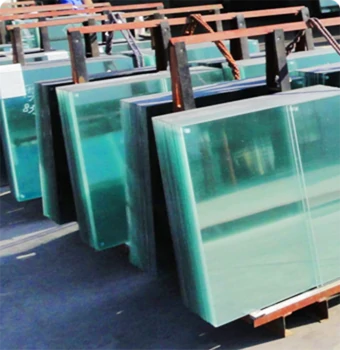Glass Panels for Walls A Modern Approach to Interior Design
In contemporary architecture and interior design, glass panels for walls have emerged as a favored element, symbolizing transparency, openness, and a seamless connection between indoor and outdoor spaces. Utilizing glass as a design feature introduces an array of benefits, transforming traditional concepts of spatial organization and lighting while promoting an aesthetic of sophistication.
Expansive Natural Light
One of the most significant advantages of incorporating glass panels into walls is the abundant natural light they allow. Unlike conventional walls, which can restrict light flow, glass panels create a sense of airiness and brightness in any space. This feature is especially beneficial in urban environments where building density can limit natural light exposure. By utilizing glass panels, designers can enhance the interior ambiance, making rooms feel more spacious and inviting.
Furthermore, natural light has positive effects not only on the aesthetic appeal of a space but also on the well-being of its occupants. Studies have shown that exposure to natural light can improve mood, increase productivity, and promote better health. In office environments, glass panels help to create an uplifting atmosphere that fosters creativity and collaboration among employees.
Visual Connectivity and Spatial Fluidity
Glass panels enable a unique visual connectivity between different areas of a building while maintaining distinct spaces. This characteristic is particularly advantageous in open-plan designs, where the traditional notion of defined walls can feel restrictive. Glass walls allow for unobstructed sightlines, promoting interaction and engagement without sacrificing privacy. For instance, in modern homes, living areas can be separated from home offices or libraries by glass partitions, providing both openness and a degree of separation when necessary.
Moreover, the use of glass can enhance the flow of movement through a space. By maximizing sightlines and minimizing physical barriers, environments feel less cramped and more cohesive. This design philosophy aligns with the principles of modern minimalism, which values simplicity, functionality, and a reduction of visual clutter.
glass panels for walls
Aesthetic Versatility and Customization
Glass panels for walls come in various styles, finishes, and designs, offering extensive customization options. They can be frosted for added privacy, tinted for heat control, or treated with various textures to achieve different visual effects. This versatility allows architects and designers to create unique settings that reflect their clients' tastes and functional requirements.
In addition to functional benefits, glass walls can act as stunning focal points in a room. Frameless glass panels can create a sleek, modern look, while more ornate designs can evoke a sense of elegance reminiscent of classic architecture. The reflective quality of glass also provides opportunities for creative interplay with light and shadow, further enhancing the overall aesthetic of a space.
Sustainability Considerations
As sustainability becomes a crucial concern in architecture and design, glass panels are increasingly being adopted for their energy-efficient properties. Modern advances in glazing technology allow for the production of energy-efficient glass that can help regulate indoor temperatures. Low-emissivity (Low-E) coatings and double or triple glazing improve insulation, reducing reliance on heating and cooling systems and ultimately lowering energy bills.
Additionally, glass is a sustainable material when sourced responsibly. Many manufacturers are now focusing on recycling processes and environmentally friendly production methods, making glass a viable option for eco-conscious projects.
Conclusion
Glass panels for walls represent a transformative approach to interior design, providing benefits that encompass aesthetics, functionality, and sustainability. Their ability to enhance natural light, promote visual connectivity, and offer aesthetic versatility makes them an attractive choice for architects and designers alike. As the trend towards more open and airy spaces continues, the incorporation of glass panels is likely to remain a defining feature of modern architecture, bridging the gap between elegance and practicality in our living and working environments. Embracing glass in interior design not only elevates the visual appeal of spaces but also enriches the experience of those who inhabit them, making it a quintessential element of contemporary design philosophy.
 Afrikaans
Afrikaans  Albanian
Albanian  Amharic
Amharic  Arabic
Arabic  Armenian
Armenian  Azerbaijani
Azerbaijani  Basque
Basque  Belarusian
Belarusian  Bengali
Bengali  Bosnian
Bosnian  Bulgarian
Bulgarian  Catalan
Catalan  Cebuano
Cebuano  Corsican
Corsican  Croatian
Croatian  Czech
Czech  Danish
Danish  Dutch
Dutch  English
English  Esperanto
Esperanto  Estonian
Estonian  Finnish
Finnish  French
French  Frisian
Frisian  Galician
Galician  Georgian
Georgian  German
German  Greek
Greek  Gujarati
Gujarati  Haitian Creole
Haitian Creole  hausa
hausa  hawaiian
hawaiian  Hebrew
Hebrew  Hindi
Hindi  Miao
Miao  Hungarian
Hungarian  Icelandic
Icelandic  igbo
igbo  Indonesian
Indonesian  irish
irish  Italian
Italian  Japanese
Japanese  Javanese
Javanese  Kannada
Kannada  kazakh
kazakh  Khmer
Khmer  Rwandese
Rwandese  Korean
Korean  Kurdish
Kurdish  Kyrgyz
Kyrgyz  Lao
Lao  Latin
Latin  Latvian
Latvian  Lithuanian
Lithuanian  Luxembourgish
Luxembourgish  Macedonian
Macedonian  Malgashi
Malgashi  Malay
Malay  Malayalam
Malayalam  Maltese
Maltese  Maori
Maori  Marathi
Marathi  Mongolian
Mongolian  Myanmar
Myanmar  Nepali
Nepali  Norwegian
Norwegian  Norwegian
Norwegian  Occitan
Occitan  Pashto
Pashto  Persian
Persian  Polish
Polish  Portuguese
Portuguese  Punjabi
Punjabi  Romanian
Romanian  Russian
Russian  Samoan
Samoan  Scottish Gaelic
Scottish Gaelic  Serbian
Serbian  Sesotho
Sesotho  Shona
Shona  Sindhi
Sindhi  Sinhala
Sinhala  Slovak
Slovak  Slovenian
Slovenian  Somali
Somali  Spanish
Spanish  Sundanese
Sundanese  Swahili
Swahili  Swedish
Swedish  Tagalog
Tagalog  Tajik
Tajik  Tamil
Tamil  Tatar
Tatar  Telugu
Telugu  Thai
Thai  Turkish
Turkish  Turkmen
Turkmen  Ukrainian
Ukrainian  Urdu
Urdu  Uighur
Uighur  Uzbek
Uzbek  Vietnamese
Vietnamese  Welsh
Welsh  Bantu
Bantu  Yiddish
Yiddish  Yoruba
Yoruba  Zulu
Zulu 

